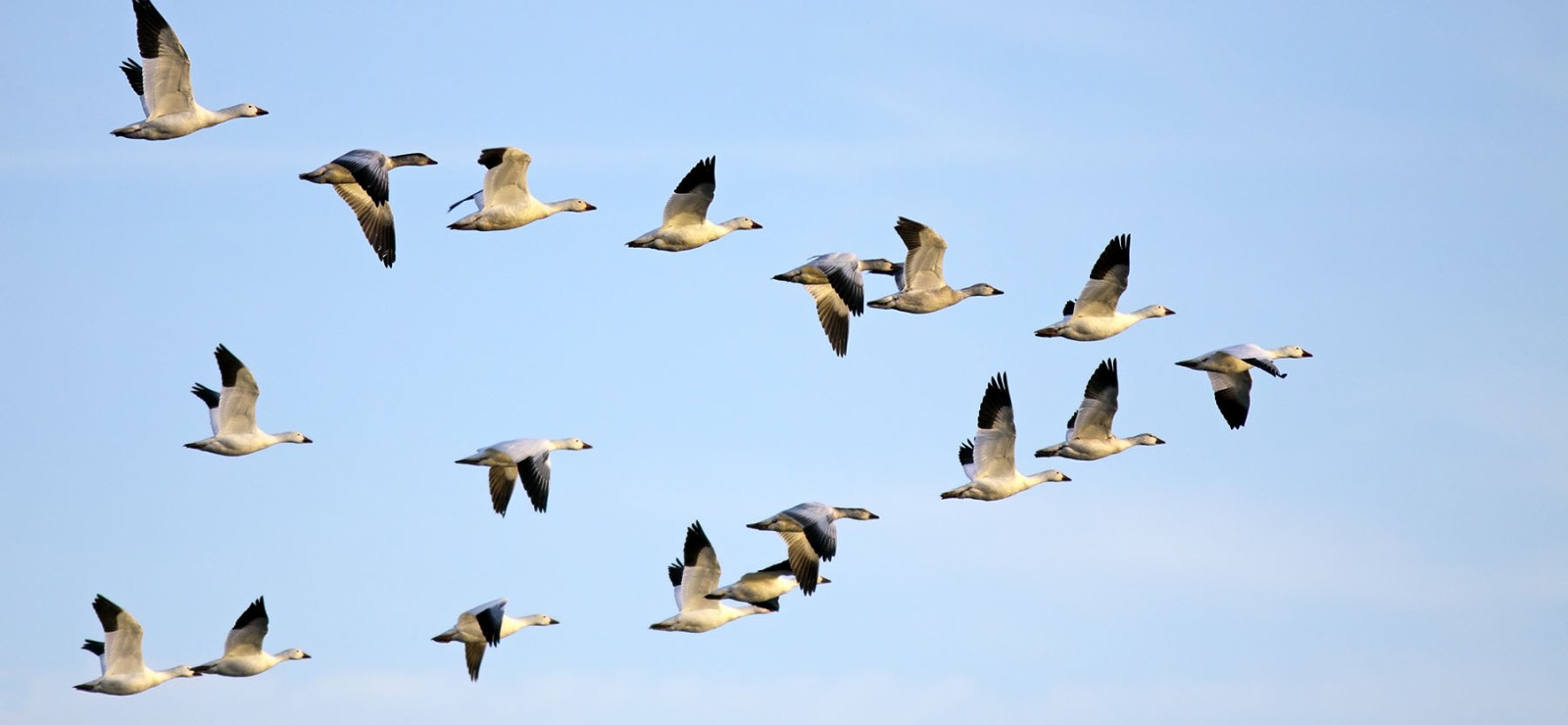The advent of spring also means the return of many migratory birds after a winter in warmer countries. But in journeys that are often thousands of kilometres long, how do these birds find their way? Not with Waze or Google Maps, but thanks to the sun, a kind of built-in compass and highways.
Bram Catfolis heads out at least once a week at this time to spot birds in nature. “There is a lot going on in nature during April and May,” says the UGhent PhD student and ornithologist. “Temperatures are rising and the days are lengthening. It is the ideal period for birds to return from the south.”
But how do migratory birds know where to fly? Several factors appear to come into play. First and foremost, celestial bodies play a role. “To orientate themselves and know where the north-south axis is, birds base themselves on the position of the sun during the day and the position of the stars at night,” Bram explains.
Do birds see magnetic fields?
There is more to it than that. “Birds can perceive terrestrial magnetic fields, according to recent research. There are two hypotheses for this. One is that they have iron-containing crystals in their bodies, and can therefore stay on course.”
Another possible explanation has to do with the protein cryptochrome 4. “In certain species of birds, such as robins, this is thought to be present in the eyes. The electrons in the protein respond to light stimuli. The way it works is quite complicated, but the bottom line is that the protein allows birds to pick up magnetic lines and ‘see’ them, just as we see colours. These show them the way to and from the south.”
Recognising trees and highways
That’s about it as far as long-distance navigation is concerned, but once migratory birds get closer to their destination, they also begin to recognise certain topographical features. “Birds remember where water, trees and even highways and buildings are. They possess a strong photographic memory.”
But not only that. Birds also rely on olfactory navigation, yes, smell as a navigation system. “Birds follow their noses during migration. They recognise scents from the environment that lead them to their destination.”
It is therefore no coincidence that certain birds can be found in exactly the same place year after year. “If they have a good time somewhere, they return to that place every year,” he says.
Effects of climate change
Bird migration is a ‘weather phenomenon’ and is tied to the changing of seasons. The fact that climate change is affecting this weather may have longer-term consequences for bird migration.
Here’s the thing, he says: “In the areas they come from, there is no surplus of food. There is more competition, there are more parasites in the area, and they are hunted more, ... In spring, nature kicks in and there is an abundance of food. In other words, the perfect location to migrate to.”
“But climate change can create a mismatch. Plants bloom earlier and earlier, while birds have not yet started their trip north. By the time they arrive here, much of the food has already been eaten by birds coming from less far. Long-distance migrants in particular are struggling to adapt to the new rhythm, and this will become increasingly difficult.”
And there is another consequence: “Birds feel that winter is less harsh, so some stay in our country. They are the first to arrive in spring to find a good nesting place AND have an oversupply of food.”
Bram does not want to overexaggerate the consequences, but he is vigilant: “Nature will always adapt, but the speed at which it is changing now is worrying. So it is certainly not dramatic, but we notice that there are already certain species that are in trouble.”
Read also
A ‘tree’mendous tale of natural resilience
What if trees could talk? Well, every so often they do. In doing so, they give a glimpse of the past. For example, a 250-year-old oak in the castle grounds at Elverdinge near Ypres tells us more about the First World War. The tree survived this war, despite the incessant bombs. The Woodlab at Ghent University tells us the touching story of this oak tree.
Nine things you never knew about mushrooms (or should we call them fungi? Or moulds?)
Autumn is the season for mushrooms – they are everywhere, and certainly growing in abundance in forests. But did you know that the mushrooms you see are just a very small part of a vast, gigantic, mainly subterranean network? And that without this network, other plants simply wouldn’t be able to survive?
Science or art? Researcher Kim creates unique tree scans
Kim Calders discovered his passion for scanning trees when doing his PhD in Hallerbos forest, near Brussels. As a bio-engineer, he has been travelling the world with his LiDAR scanner ever since. Along the way, he has ended up face to face with cassowaries and elephants, and collaborated with artists to make a forest sing. A story in nine pictures.
Ghent University developing the climate-adaptive forest of the future
The last years’ drought has caused stress in trees. Some have stopped growing; others have shed their foliage. Sometimes entire forests have perished. The bioengineers at the Department of Environment (Faculty of Bioscience Engineering) are crossing national borders to try to find out the causes of the problems effecting trees globally and working on a type of forest that can cope with climate change.




